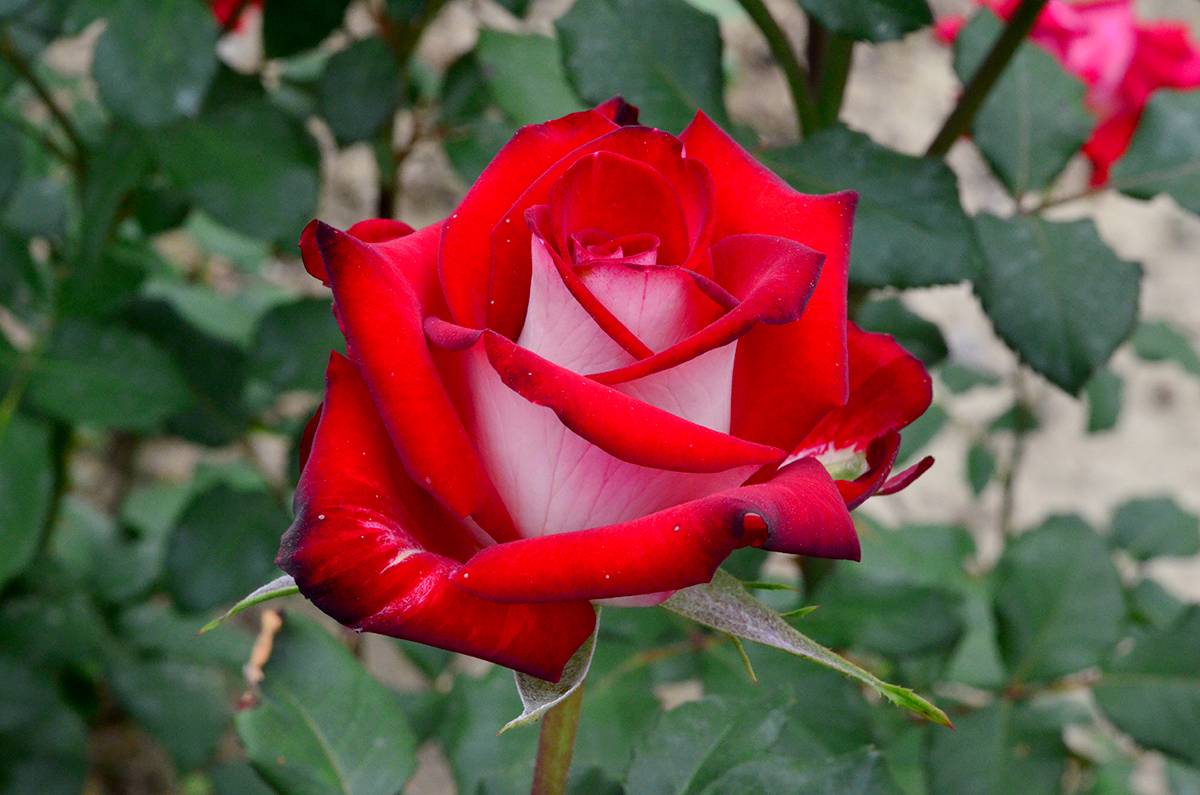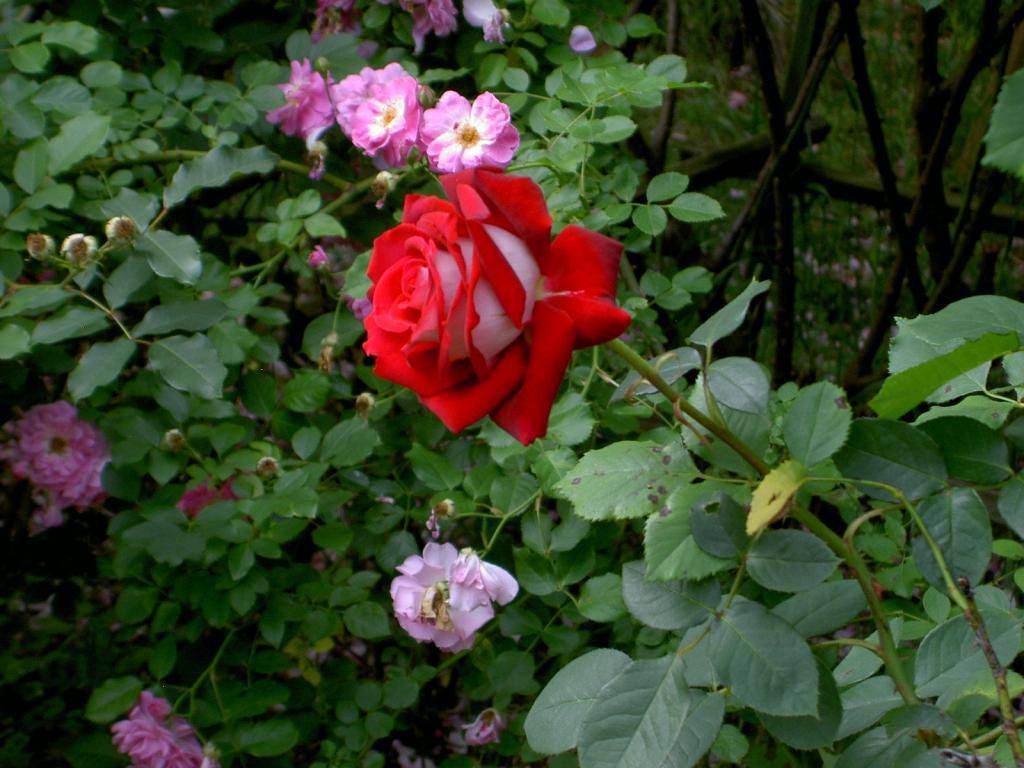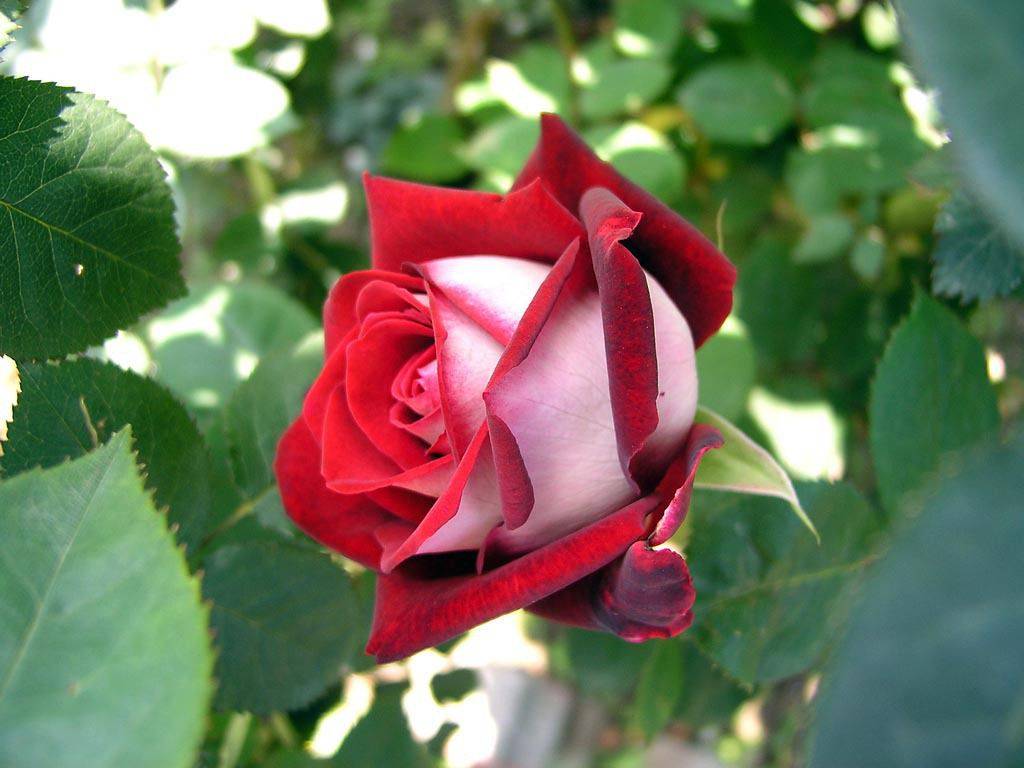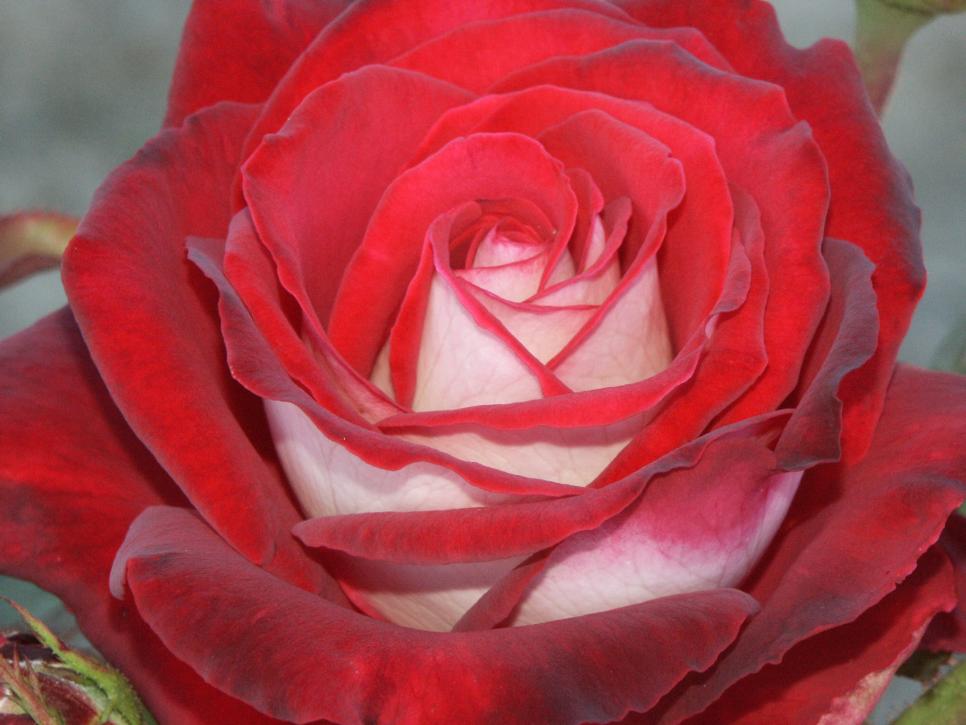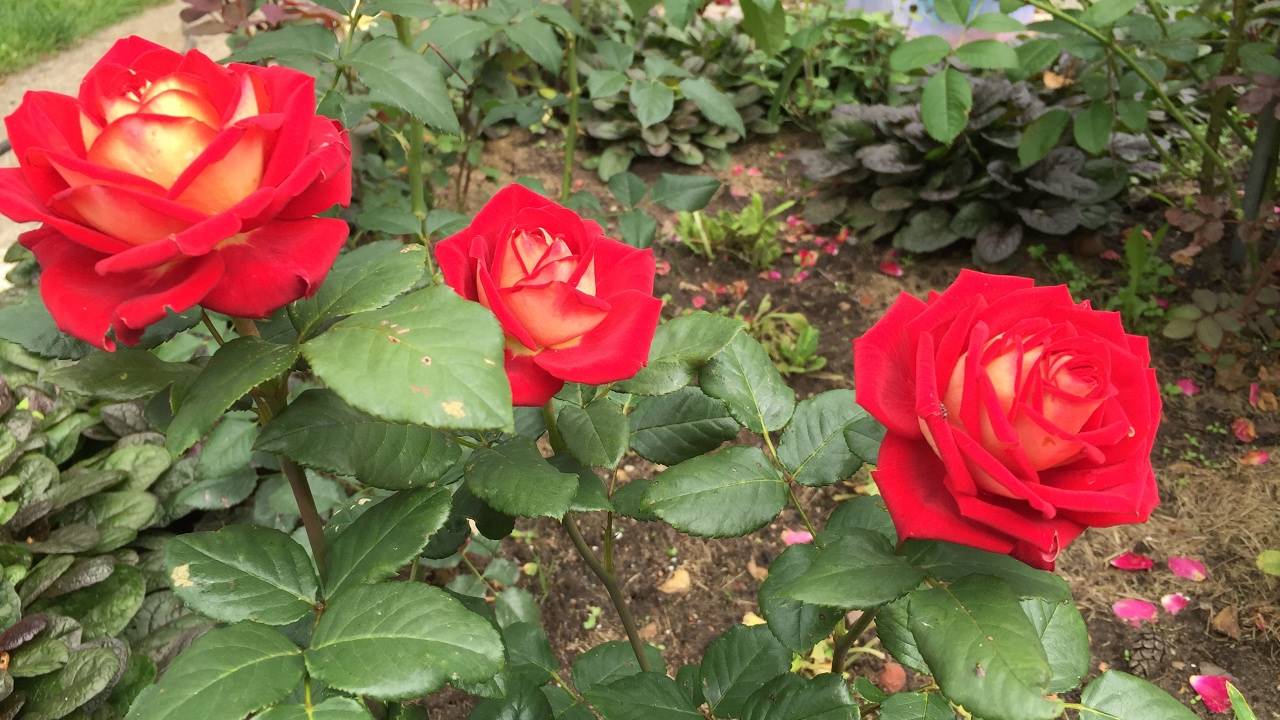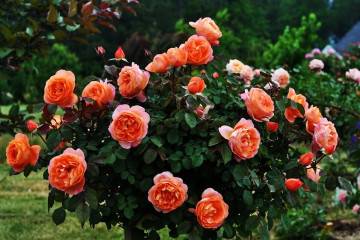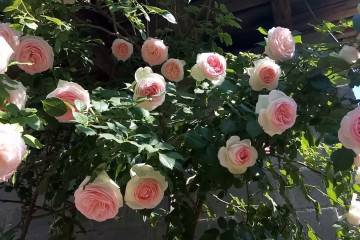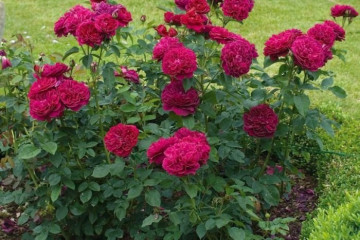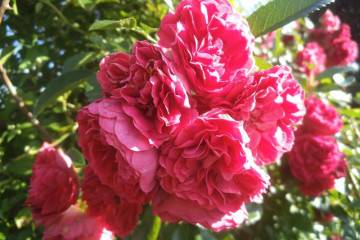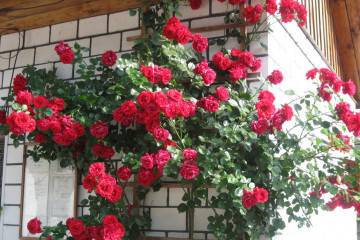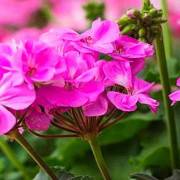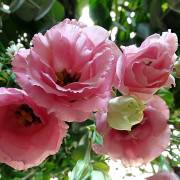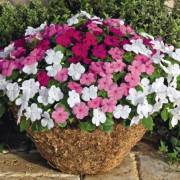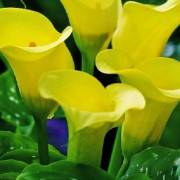Rose Osiria (Osiria) - description of the variety from Germany
Content:
Osiria is a bicolor hybrid tea variety. Even in photographs, she attracts the eye. And when it is alive, Osiria will become a real pearl of any landscape.
Brief description and characteristics
Rose Osiria was bred in the German nursery Reimer Kordes in 1978. An adult shrub reaches a height of 75-90 cm. It has strong and straight shoots, spreading and erect branches. On them, there are wide dark green leaves with a matte surface in a dense row.
The buds of this variety have the shape of a glass, when fully opened, they form into a cup-shaped one. The flower consists of many petals that fit tightly together. On the one hand, the petal has a rich red velvety hue, and on the other, it is creamy and milky. The diameter of the bud is 10-12 cm. On the shoot are located singly. The aroma is fresh but slightly spicy.
Advantages and disadvantages of the variety
In addition to its appearance, this variety has a number of other advantages:
- high frost resistance;
- flowering duration;
- straight and long, easy-to-cut shoots;
- long-term growth and flowering.
But there are also disadvantages:
- lack of feeding can provoke chlorosis;
- susceptibility to diseases (powdery mildew, rust);
- difficult reproduction by layering;
- buds after rain can droop from heaviness.
Use in landscape design
Osiria rose bushes fit well into the design of any site, look good on flower beds and flowerpots. They are in perfect harmony with other plants in flower beds and gardens.
Growing a flower, how to plant it in open ground
For growing, the Osiria rose is purchased in special nurseries or garden centers.
The best option for planting is a ready-made seedling, so there is every chance of getting a rose with all species characteristics. It is only important to choose it correctly. The seedling should have 2-3 strong shoots with buds. The root collar should reach 8-10 mm, and the trunk should be strong and free from rotting spots.
The best temperature for planting Osiria is 12 ° C, so the rose is planted in late spring - early summer.
Seat selection
Hybrid tea rose Osiria does not like wet places, so it is better to plant it on a hill. Long direct sunlight also negatively affects the shrub. It is important that the place is in the shade for some part of the day, for example, an area near the wall of the house is suitable. But the distance from the wall must be at least 50 cm.
How to prepare the soil and flower for planting
A seedling with open roots is pre-soaked in water for 10-12 hours. Closed roots do not require any preparation.
Rose Osiria loves loose and acidified soil. Therefore, it is better to first add a mixture of sand, peat, ash or chalk to the soil. At the same time, you can make the first top dressing - superphosphate.
Planting procedure step by step
Rose planting is performed in this order:
- Dig a hole 60 × 60 cm.
- Drainage is laid at the bottom of the hole - a small layer of sand with crushed stone or expanded clay.
- A seedling is placed in the recess, the roots are carefully straightened.
- Fill in the hole, mulch the soil around the neck of the seedling.
- Water the soil abundantly and loosen the soil slightly so that the roots get more air.
Plant care
Like any other hybrid tea variety, Osiria requires proper attention.
Watering rules and humidity
Osiria does not like high humidity, this leads to rapid decay of the roots. Therefore, it is required to avoid stagnant water. Watering should be infrequent, once every 2-3 days is enough. It is necessary to ensure that the soil under the rose bush has time to dry out.
Top dressing and soil quality
For the entire season, the rose should receive no more than 5 dressings. Mineral fertilizers, which contain a lot of phosphorus and potassium, will be useful. Of organic fertilizers, Osiria will respond well to mullein solution.
Pruning and replanting
Pruning to form a beautiful bush shape is carried out in spring and autumn. Any dried or damaged shoots are harvested immediately.
The transplant is also carried out at the beginning or end of the season.
Features of wintering a flower
Before the onset of the dormant period, pruning is carried out. Then they cover the bush with a film or a box made of polyethylene or cardboard. The soil above the roots can be covered with spruce branches or dry foliage.
Blooming rose
With its flowering, Assyria rose will delight in the first year after planting.
A period of activity and rest
Flowering lasts the entire season from mid-June to October (before frost). The buds replace each other gradually, with intervals of 2 weeks.
Care during and after flowering
Withered buds should be cut immediately below the flower to the first bud.
What to do if it does not bloom
The reasons for the lack of buds in the Osiria rose can be:
- lack or excess of light;
- improper watering;
- lack of phosphorus and potassium.
Eliminating these causes should bring results quickly.
Flower propagation
The best method for this rose variety is grafting. But this can be done only if the seedling itself was not grafted onto the rosehip.
The best time for harvesting cuttings is June, when Osiria has already bloomed. Then the shoots will be strong and healthy.
Cutting is carried out as follows:
- From this year's shoot, the upper part is cut off by 10-12 cm so that a couple of leaves remain on it. The buds should be removed.
- The lower part is treated with a growth-promoting solution and placed in water or placed in a mixture of soil and sand.
- From above, the cutting is covered with a film or cap to maintain a humid environment (22-25 ° C). After 3-4 weeks, noticeable roots will appear.
- The rose is planted in open ground at the end of August or the beginning of the next season.
Diseases, pests and ways to control them
Osiria has low resistance to powdery mildew and rust. To avoid these diseases, at the beginning of the season, the bush is treated with copper sulfate. Suspicious leaves with spots are cut off immediately.
Of the pests, this variety usually affects aphids. In this case, treatment is carried out with a solution of actara or karbofos.
Otherwise, there are no special requirements for caring for a rose of this variety. Everything is extremely simple. The main thing is to choose a quality seedling before planting.
